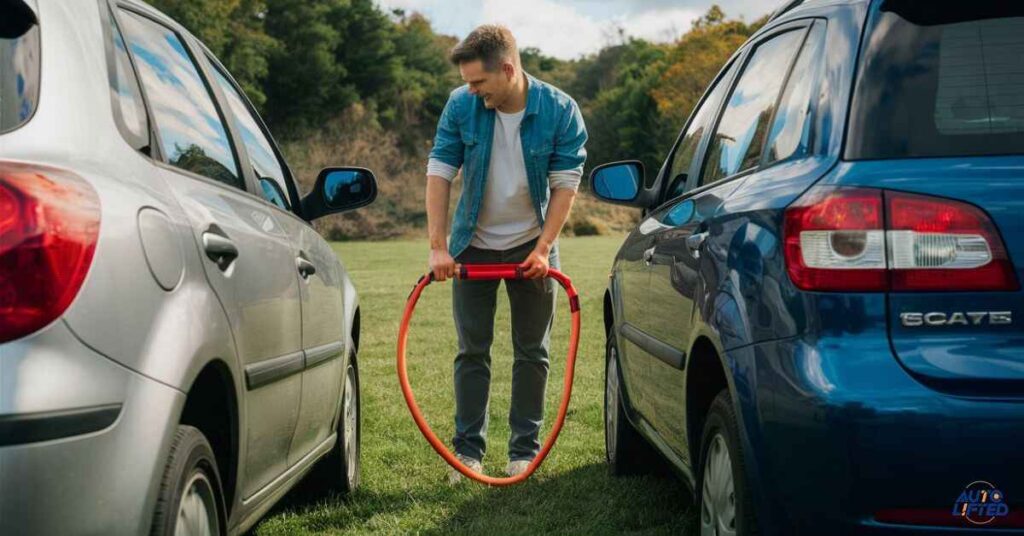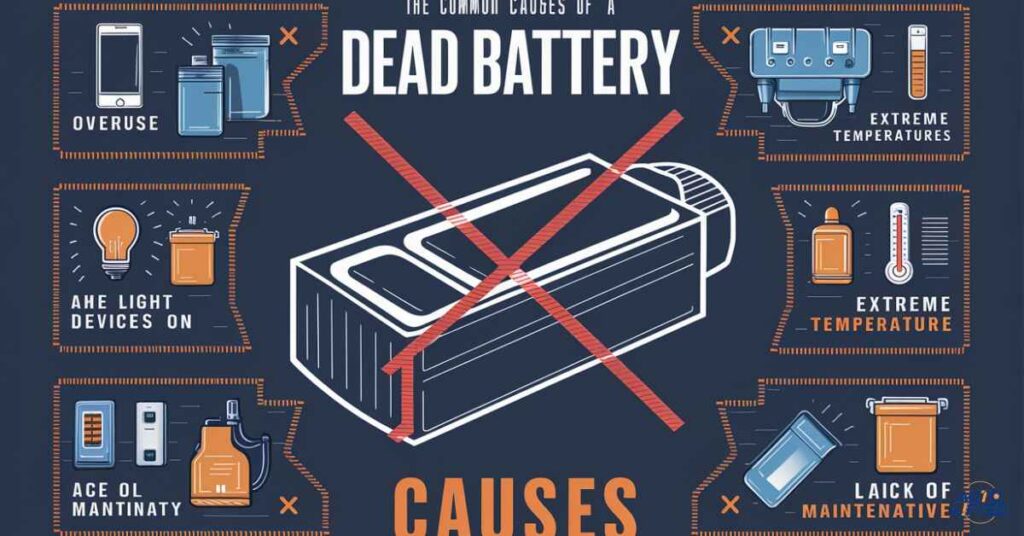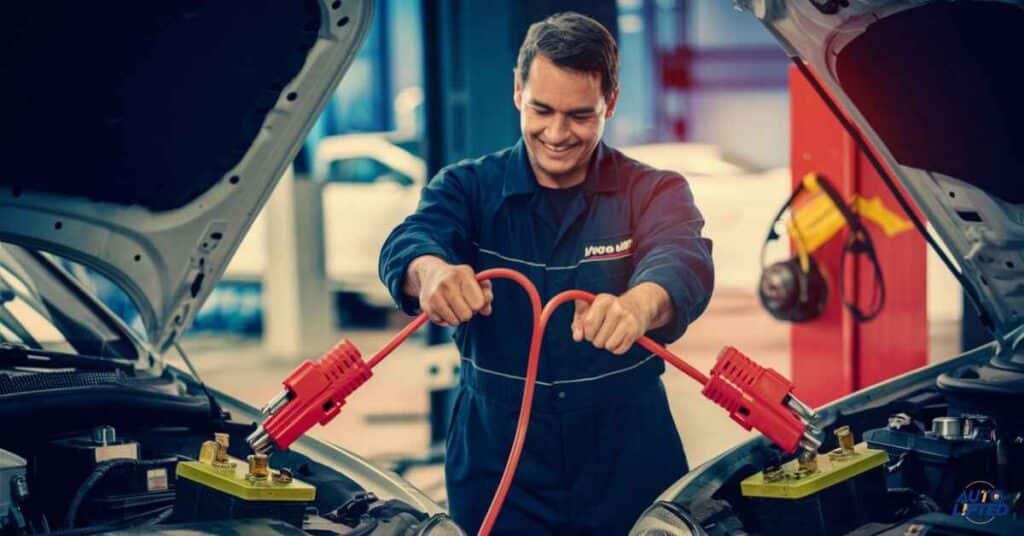Jump-starting a car is a skill every driver should know. Whether you’re stranded with a dead battery or helping a friend in need, knowing how to jump a car can save the day. In this guide, we’ll cover everything you need to know about safely jump-starting a car, including the equipment you’ll need, safety precautions to take, and a step-by-step guide to get your vehicle back on the road.
Understanding the Basics of Jump-Starting a Car

Jump-starting a car involves using another vehicle’s battery to give your car the initial boost it needs to start. This is typically done when your car’s battery is dead and unable to provide enough power to start the engine. Common causes of a dead battery include leaving lights on overnight, extreme temperatures, or an old battery that needs replacing.
Read This Blog:
Are Nissans Good Cars?: A Comprehansive Guide
Why Jump-Starting Is Necessary
Jump-starting is necessary because a car’s engine requires a significant amount of electrical power to start. The battery provides this initial power, which is then used by the starter motor to crank the engine and start the combustion process. If the battery is dead or low on charge, there is not enough power to start the engine, hence the need for a jump start.
Common Causes of a Dead Battery

- Leaving lights or accessories on when the engine is not running
- Extreme temperatures, which can affect the battery’s performance
- An old or faulty battery that needs replacing
How Jump-Starting Works
Jump-starting works by connecting the dead battery to a fully charged battery using jumper cables. The electrical current from the charged battery flows into the dead battery, providing it with enough power to start the engine. Once the engine is running, the alternator in the vehicle’s engine recharges the dead battery.
Read More:
Safety Precautions
Jump-starting a car involves working with electrical components and batteries, which can be dangerous if not done correctly. It is essential to take the following safety precautions:
- Wear safety glasses and gloves to protect against battery acid
- Ensure both vehicles are parked in a safe location away from traffic
- Keep bystanders at a safe distance
- Follow the manufacturer’s instructions for using jumper cables
Safety Precautions Before Jump-Starting

Before attempting to jump-start a car, it’s crucial to take some safety precautions. Always wear safety glasses and gloves to protect yourself from battery acid. Make sure both vehicles are parked in a safe location away from traffic, and keep bystanders at a safe distance.
Also Read This Blog:
How To Sell A Car In Texas
Equipment Needed to Jump-Start a Car
To jump-start a car, you’ll need a few key pieces of equipment:
- Jumper cables (also known as jump leads)
- A second vehicle with a fully charged battery
It’s important to avoid using hybrid or electric cars for jump-starting, as this can cause damage to the vehicle’s electrical system.
Step-by-Step Guide to Jump-Starting a C

Switch off all electrical systems: Before connecting the jumper cables, ensure all electrical systems in the car with the dead battery are switched off, including lights, radio, and air conditioning.
Park the vehicles: Park the second vehicle close to the car with the dead battery, but ensure they are not touching.
Open the bonnets: Open the bonnets of both vehicles and locate the batteries.
Connect the jumper cables:
- Attach one end of the red jumper cable to the positive terminal of the dead battery.
- Attach the other end of the red jumper cable to the positive terminal of the good battery.
- Attach one end of the black jumper cable to the negative terminal of the good battery.
- Attach the other end of the black jumper cable to a metal part of the car with the dead battery.
Start the second vehicle: Start the engine of the second vehicle and let it run for a few minutes to charge the dead battery.
Start the car: Try to start the car with the dead battery. If it doesn’t start, wait a few more minutes and try again.
Remove the jumper cables: Once the car has started, carefully remove the jumper cables in the reverse order that they were connected.
Let the engine run: Keep both vehicles running for a few minutes to ensure the battery is fully charged.
After Jump-Starting
After successfully jump-starting a car, it’s important to take a few additional steps:
- Drive the vehicle for at least 30 minutes to allow the alternator to recharge the battery.
- Consider using a battery charger to fully recharge the battery.
Additional Tips and Considerations
- When to Replace Your Battery: If your battery repeatedly goes dead, it may be time to replace it. Consult a professional for advice.
- Avoiding Future Issues: To avoid future battery issues, ensure your battery is well-maintained. This includes checking the terminals for corrosion and keeping the battery clean.
- Emergency Jump-Starting: Consider keeping a portable jump starter in your vehicle for emergencies when another vehicle is not available.
frequently Asked question
Which jumper cable goes on first?
Attach the red (positive) cable to the positive terminal of the dead battery first, then to the positive terminal of the good battery.
How do you manually jumpstart a car?
Use jumper cables to connect the dead battery to a working one, following the correct order, and then start the engine of the car with the good battery.
How do you jump off a car properly?
After connecting the jumper cables in the correct order, start the car with the good battery, then start the car with the dead battery. Remove the cables in reverse order.
What is the correct order to jump-start a car battery?
Connect the positive terminals with the red cable, then connect the black cable to the negative terminal of the good battery and a ground point on the dead car. Start the good car and then the dead one.
How to start a dead car battery?
Use jumper cables to jumpstart the car from another vehicle, or use a portable jump starter. If it doesn’t work, the battery might need to be replaced.
Conclusion
Knowing how to jump-start a car is a valuable skill that can save you time and money. By following the steps outlined in this guide, you can safely jump-start a car and get back on the road in no time. Remember to always prioritize safety and seek professional help if you’re unsure or uncomfortable performing the jump-start procedure.
Remember, the information provided in this guide is intended for educational purposes only. Always refer to your vehicle’s owner’s manual for specific instructions and safety guidelines.







